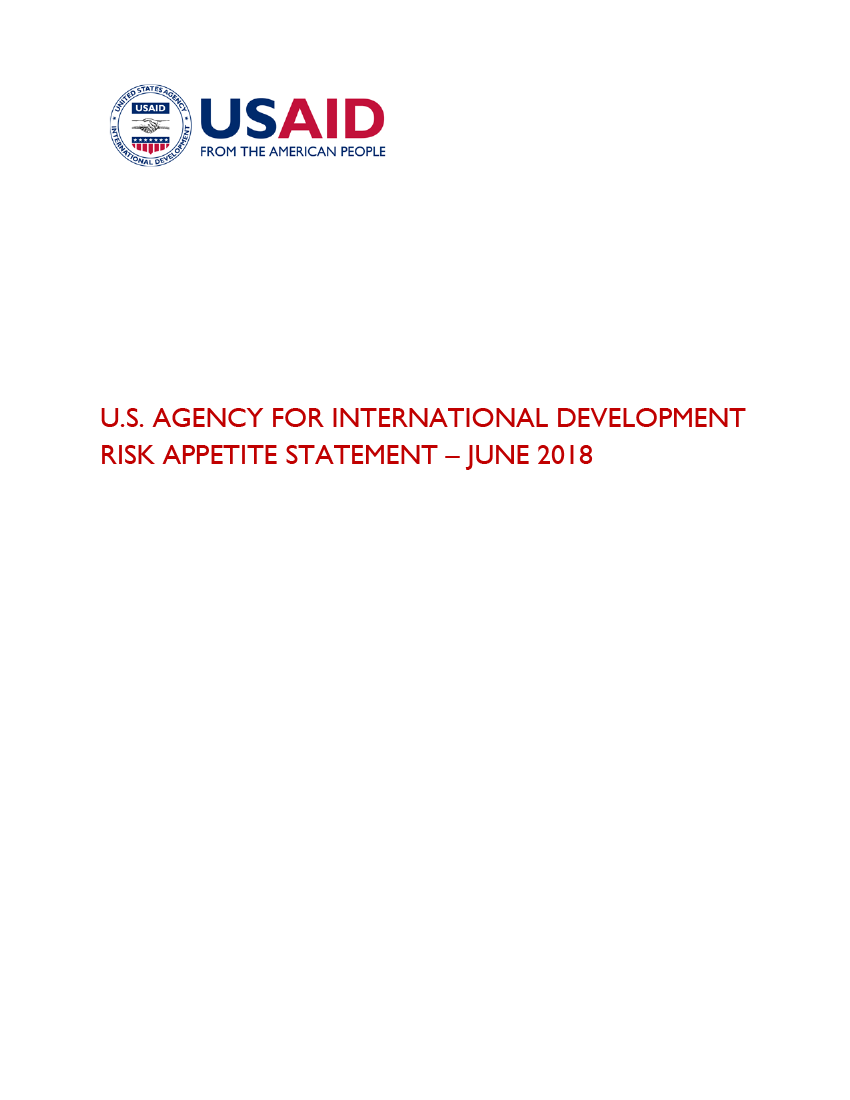Speeches Shim
USAID is committed to effectively managing risk
USAID staff make decisions about risk and opportunities as part of their day-to-day activities. This Risk-Appetite Statement [PDF] strengthens an already well developed set of risk management tools and allows staff to take advantage of opportunities to better achieve our mission.
Q: What is a Risk-Appetite Statement?
A: The Playbook: Enterprise Risk Management for the Federal Government [PDF] defines risk appetite as “the amount of risk an organization is willing to accept on a broad level in pursuit of its objectives given consideration of costs and benefits.” A risk appetite statement is a management tool that provides guidance from leadership to staff on the amount of risk an agency or organization is willing to undertake in pursuit of its objectives. Risk appetite statements “help agencies make risk-informed decisions with regard to allocation of resources, management controls, and potential consequences or impacts to other parts of the organization, and can reduce surprises and unexpected losses.”
Q: Why did USAID develop a Risk-Appetite Statement?
A: In 2016, the Office of Management and Budget (OMB) updated Circular A-123 [PDF] to introduce a new requirement that Federal Departments and Agencies integrate Enterprise Risk Management (ERM) with their internal-control systems. ERM is an intentional, holistic, Agency-wide approach to risk-management that emphasizes addressing the full spectrum of risks and opportunities, and managing their combined impact as an interrelated risk portfolio.
While OMB does not require agencies to develop a risk-appetite statement, USAID believes that a risk-appetite statement supports Agency staff in making informed decisions about how to manage risk throughout the program cycle.
Q: How is USAID using the Risk-Appetite Statement?
A: The purpose of this Risk-Appetite Statement is to provide USAID staff with broad-based guidance on the amount and type of risk the Agency is willing to accept as it pursues various opportunities to achieve its mission and objectives. USAID staff are using the Risk-Appetite Statement to inform how we assess and respond to a broad range of risks in seven key risk areas: programmatic, legal, reputational, security, information technology, human capital, and fiduciary.
This Statement is a critical component in USAID’s overall effort to achieve effective ERM, and leadership will review and update it as the ERM program matures and evolves.
Q: Who will use the Risk-Appetite Statement?
A: USAID leadership and staff in Washington and abroad are using the Risk-Appetite Statement to weigh opportunities and threats and inform our risk response. It can also serve as a reference for implementing partners and other stakeholders working with USAID.
For questions about the Risk-Appetite Statement, please contact erm@usaid.gov.


Comment
Make a general inquiry or suggest an improvement.